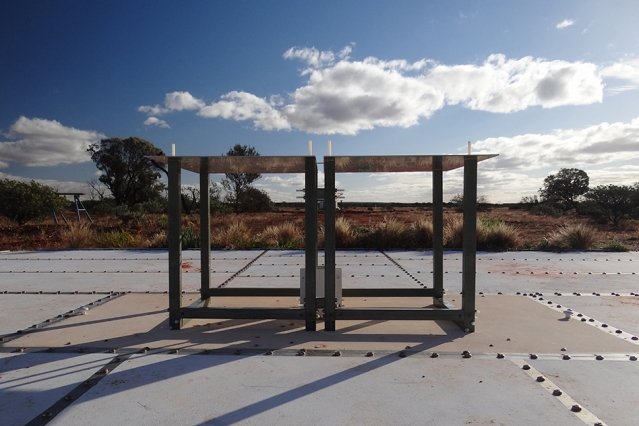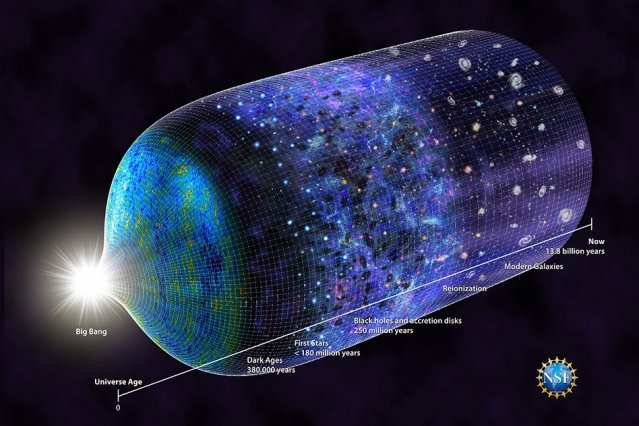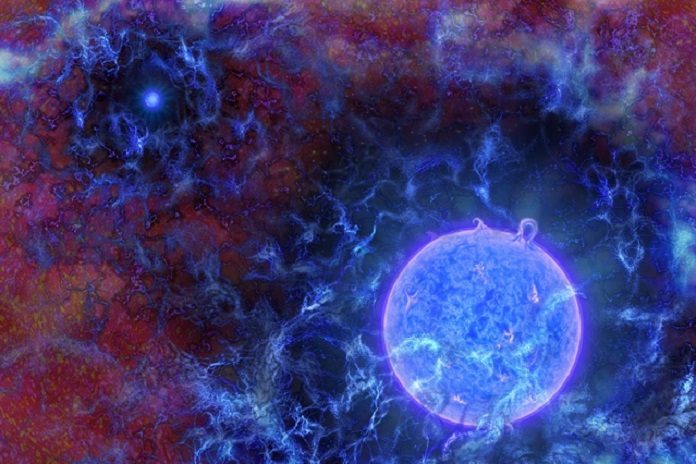MIT astronomers along with Arizona State University scientists report that they have detected faint signals of hydrogen gas from the primordial universe.
The researchers have followed the signs to only 180 million years after the Big Bang, making the identification the earliest proof of hydrogen yet watched.
They likewise confirmed that the gas was in an expression that would have been conceivable just within the sight of the principal stars. These stars, squinting on without precedent for a universe that was already without light, discharged bright radiation that associated with the encompassing hydrogen gas. Thus, hydrogen atoms over the universe started to absorb background radiation — a significant change that the researchers could distinguish as radio waves.
Study co-author Alan Rogers said, “This is the first real signal that stars are starting to form, and starting to affect the medium around them. What’s happening in this period is that some of the radiation from the very first stars is starting to allow hydrogen to be seen. It’s causing hydrogen to start absorbing the background radiation, so you start seeing it in silhouette, at particular radio frequencies.’
When scientists detected the radio waves, they found that the hydrogen gas, and the universe as a whole, must have been twice as cold as scientists previously estimated, with a temperature of about 3 kelvins, or –454 degrees Fahrenheit. Scientists are yet to ensure why the early universe was so much colder. But according to various studies, interactions with the dark matter may have played some role.
Colin Lonsdale, director of Haystack Observatory said, “These results require some changes in our current understanding of the early evolution of the universe. It would affect cosmological models and require theorists to put their thinking caps back on to figure out how that would happen.”
Scientists used EDGES (Experiment to Detect Global EoR Signature), a small ground-based radio antenna located in Western Australia, and funded by the National Science Foundation to detect the primordial hydrogen gas.

Image: Judd Bowman/Arizona State University
The antennas and portions of the receiver were designed and constructed by Rogers and the Haystack Observatory team; Bowman, Monsalve, and the ASU team added an automated antenna reflection measurement system to the receiver, outfitted a control hut with the electronics, constructed the ground plane, and conducted the field work for the project. Australia’s Commonwealth Scientific and Industrial Research Organization provided on-site infrastructure for the EDGES project.
The instrument was originally designed to pick up radio waves emitted from a time in the universe’s history known as the Epoch of Reionization, or EoR. During this period, it’s thought that the first luminous sources, such as stars, quasars, and galaxies, appeared in the universe, causing the previously neutral intergalactic medium, made mostly of hydrogen gas, to become ionized.

Image: N.R.Fuller/National Science FoundationThis updated timeline of the universe reflects the recent discovery that the first stars emerged by 180 million years after the Big Bang. The research was conducted by Judd Bowman of Arizona State University and his colleagues, with funding from the National Science Foundation.
Image: N.R.Fuller/National Science Foundation
When the researchers looked within this range, they initially failed to pick up much of any signal. They realized that theoretical models had predicted that primordial hydrogen should give off emissions within this range if the gas was hotter than the surrounding medium. But what if the gas was in fact colder? Models predict that the hydrogen should then absorb radiation more strongly in the 50 to 100 megahertz frequency range.
Rogers said, “As soon as we switched our system to this lower range, we started seeing things that we felt might be a real signature. We see this dip most strongly at about 78 megahertz, and that frequency corresponds to roughly 180 million years after the Big Bang. In terms of a direct detection of a signal from the hydrogen gas itself, this has got to be the earliest.”
“It is unlikely that we’ll be able to see any earlier into the history of stars in our lifetimes,” lead author Bowman of ASU says. “This project shows that a promising new technique can work and has paved the way for decades of new astrophysical discoveries.”
